Tungsten Oxide in Polymer Electrolyte Fuel Cell Electrode
- Details
- Category: Tungsten Information
- Published on Monday, 20 June 2016 17:41
- Written by Cristina
- Hits: 247
Development of new alternative electrode materials is essential in order for the polymer electrolyte fuel cell (PEFC) to be able to reach a broad market. Today, high platinum loadings are required, especially on the cathode, to obtain sufficient activity for oxygen reduction. In addition, electrode degradation causes loss of catalyst surface area and requires high initial loadings to maintain the cell performance over time. There are problems related to Pt also on the anode side where poisoning of the catalyst, by e.g. CO, reduces the activity.
Approaches to improve the electrodes and reduce their costs are continuously evaluated and include alternative catalysts or supports as well as new structures and morphologies of the catalyst layer. Alternative catalysts, based on non-precious metals, Pt alloys/mixtures, and/or novel supports should preferably reduce the total amount of Pt, increase the activity, and be stable in the fuel cell environment. The support material can influence the activity by spill-over effects as well as changing the electronic structure of the catalyst. New support materials can improve the activity, utilization, and stability of the catalyst or of the support itself.
Tungsten oxide is a material which has been extensively investigated for a wide range of applications, mainly, due to its unique electrochromic properties but also for its electrocatalytic activities. The electrochromism allows tungsten oxide to intercalate/deintercalate ions (of e.g. H, Li, Na, K, Pb, Cd) into its structure in the formation of tungsten bronzes. The most widely studied form is the hydrogen tungsten bronze where protons are inserted in the oxide structure as HxWO3 and 0 < x < 1. The bronze formation mechanism has been the subject for numerous studies and it is suggested that the hydrogen atoms form hydroxyl bonds in the tungsten oxide.
The bronze formation is greatly affected by the water content, porosity, and also crystallinity, which in turn affect the catalytic properties of tungsten oxide. At the same time as protons can be incorporated in the WOx structure, they also have a significant mobility which means that WOx functions as a proton conductor under these conditions. Since the hydrogen tungsten bronze formation is dependent on the water content, large variation in conductivity has been reported when varying the relative humidity. Moreover, Pt supported on tungsten oxide has been shown to affect the bronze formation and both an increased intensity of the hydrogen intercalation/deintercalation peaks as well as a shift of the peak potential to higher potentials has been reported.
Tungsten oxide has been evaluated both as support and active catalyst in fuel cell anode as well as cathode electrodes. Sole tungsten oxide has displayed activity for hydrogen oxidation, which was attributed to high porosity and high surface area. Combined Pt and tungsten oxide based catalysts have been investigated for methanol/ethanol oxidation, CO oxidation, hydrogen oxidation as well as oxygen reduction. For methanol oxidation, the Pt on WOx system has shown improved efficiency over Pt catalyst due to both the spill-over of hydrogen from Pt to WOx but also the ability of WOx to provide oxygen atoms at low potentials and thereby avoiding CO-poisoning. Others have attributed the improved performance to an increased electrochemical active surface area (ECSA) of Pt on WOx.
Tungsten oxide is also relatively stable in acidic environment, which is a prerequisite for use in polymer electrolyte fuel cell applications. However, some dissolution of tungsten oxides has been reported. In a previous study, we examined the impact of different metal oxides on the stability and activity of platinum in thin model cathodes in a PEFC. Pt on WOx did exhibit an improved activity for oxygen reduction and possibly also an improved stability compared to Pt alone. Interesting features such as reduced platinum oxide formation and platinum catalyzed hydrogen tungsten bronze formation were also seen when Pt was deposited on WOx.
| Tungsten Oxide Supplier: Chinatungsten Online www.tungsten-oxide.com | Tel.: 86 592 5129696; Fax: 86 592 5129797;Email:sales@chinatungsten.com |
| Tungsten News & Prices, 3G Version: http://3g.chinatungsten.com | Molybdenum News & Molybdenum Price: http://news.molybdenum.com.cn |
Hollow Ball Tungsten Trioxide Photocatalyst
- Details
- Category: Tungsten Information
- Published on Monday, 20 June 2016 17:37
- Written by chunyan
- Hits: 259
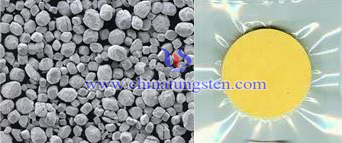 Tungsten trioxide has been researched a lot, because of its unique physical and chemical properties, such as electrochromic, gas properties, photoluminescence. In addition, the tungsten oxide has non-toxic, and narrow band gap (2.4eV ~ 2.8eV), as a semiconductor material used in the visible light photocatalyst catalytic reactions of organic matter in sewage catalytic degradation. Hollow structural material has both inner and outer surfaces, and can take advantage of multiple reflections of light into the interior, which has a unique application.
Tungsten trioxide has been researched a lot, because of its unique physical and chemical properties, such as electrochromic, gas properties, photoluminescence. In addition, the tungsten oxide has non-toxic, and narrow band gap (2.4eV ~ 2.8eV), as a semiconductor material used in the visible light photocatalyst catalytic reactions of organic matter in sewage catalytic degradation. Hollow structural material has both inner and outer surfaces, and can take advantage of multiple reflections of light into the interior, which has a unique application.| Tungsten Oxide Supplier: Chinatungsten Online www.tungsten-oxide.com | Tel.: 86 592 5129696; Fax: 86 592 5129797;Email:sales@chinatungsten.com |
| Tungsten News & Prices, 3G Version: http://3g.chinatungsten.com | Molybdenum News & Molybdenum Price: http://news.molybdenum.com.cn |
Spherical Tungsten Powder Application in Cathode Substrate
- Details
- Category: Tungsten Information
- Published on Monday, 20 June 2016 17:32
- Written by xinyi
- Hits: 252
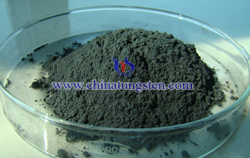
| Tungsten Powder Supplier: Chinatungsten Online tungsten-powder.com | Tel.: 86 592 5129696; Fax: 86 592 5129797;Email:sales@chinatungsten.com |
| Tungsten News & Prices, 3G Version: http://3g.chinatungsten.com | Molybdenum News & Molybdenum Price: http://news.molybdenum.com.cn |
Tungsten Powder Classification Application in Coarse Tungsten Carbide Powder Production
- Details
- Category: Tungsten Information
- Published on Monday, 20 June 2016 17:34
- Written by xinyi
- Hits: 239
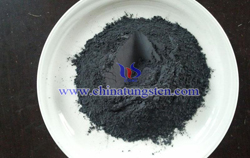
| Tungsten Powder Supplier: Chinatungsten Online tungsten-powder.com | Tel.: 86 592 5129696; Fax: 86 592 5129797;Email:sales@chinatungsten.com |
| Tungsten News & Prices, 3G Version: http://3g.chinatungsten.com | Molybdenum News & Molybdenum Price: http://news.molybdenum.com.cn |
Tungsten Carbide Circular Saw Blade Used for Woods Processing
- Details
- Category: Tungsten Information
- Published on Monday, 20 June 2016 16:17
- Written by xiaobin
- Hits: 249
Tungsten carbide materials have high hardness, high strength and excellent wear and corrosion resistance, which have been widely used in cutting tools. Especially the conventional steel circular saw blade used in woods processing has been gradually replaced by tungsten carbide circular saw blade, which has higher cutting accuracy and longer service life. Currently, tungsten carbide circular saw blade has been developing towards ultra-thin, and the swage set generally can reach 1.0mm – 2.0mm, and outer diameter typically in the range 125mm - 305mm. In addition, in the home building process as well as a variety of decorative materials processing also used by tungsten carbide circular saw blade, which can effectively improve utilization of wood, products quality, reduce energy consumption, so it has a broad application prospect.
Tungsten carbide ultra-thin circular saw blade manufacturing process includes the manufacture and heat treatment of saw plate and edges, blade geometry design, leveling blade saws, the saw blade mechanical machining, serrated welding, serrated saws and coating surface treatment technology. It has advantages as follow:
1. Small sawing width, lower cutting wastage, higher lumber recovery. Compared with conventional saw blade, it narrows 18% - 30%, the smallest ultra-thin blade edge reaches 1.0mm, which can meet the special needs of the products, such as piano keyboard, audio and so on. By reducing the cutting losses, can significantly improve the processing of sheet metal and precious materials processing timber utilization, conserve resources, improve processing efficiency;
2. Less wood crumbs by cutting, it will not cause pollution and has lower power consumption.
Currently, the main use of carbide circular saw blades in the field of wood processing in the following areas:
1. Multilayered wood flooring table board split: Use of carbide circular saw blade sawing table board will not damage the wood fibers, makes the wood natural texture, surface cracks will not appear after painting.
2. Pencil board: Early in the 1970s, American enterprises have adopted the kerf width of 1.3mm ultra-thin circular saw blades cutting board 5mm thick pencil, and introduced computers into thin blade maintenance;
3. In addition, tungsten carbide circular saw blade has been widely used in wooden shutters, piano keys, skis, audio, ping-pong racket and some other precious wood furniture manufacturing.
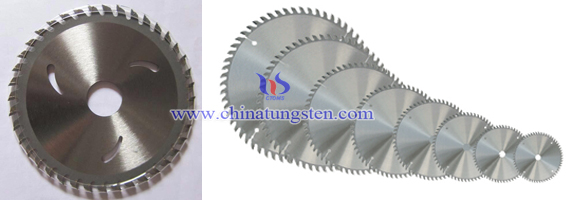
| Tungsten Carbide Supplier: Chinatungsten Online tungsten-carbide.com.cn | Tel.: 86 592 5129696; Fax: 86 592 5129797;Email:sales@chinatungsten.com |
| Tungsten News&Tungsten Prices, 3G Version: http://3g.chinatungsten.com | Molybdenum News & Molybdenum Price: http://news.molybdenum.com.cn |




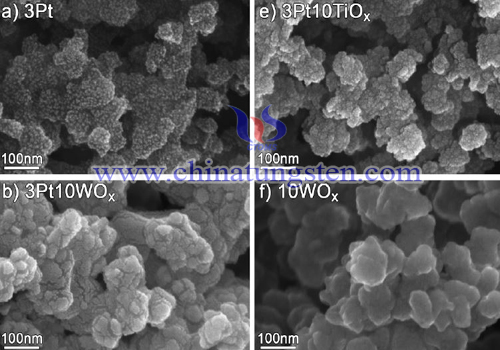

 sales@chinatungsten.com
sales@chinatungsten.com